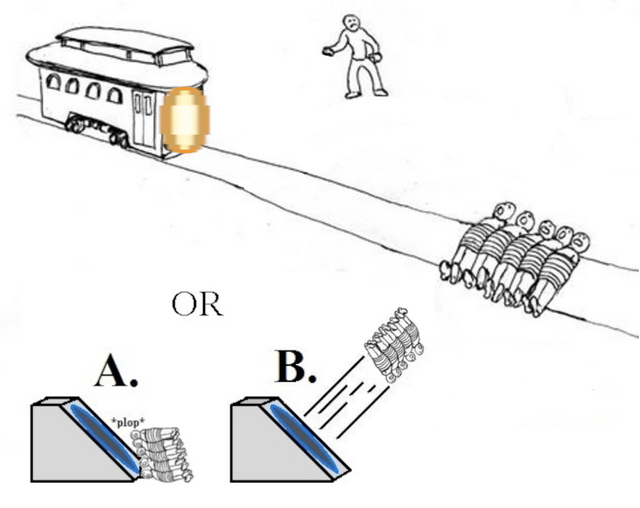this post was submitted on 18 Aug 2023
558 points (100.0% liked)
Memes
1357 readers
7 users here now
Rules:
- Be civil and nice.
- Try not to excessively repost, as a rule of thumb, wait at least 2 months to do it if you have to.
founded 5 years ago
MODERATORS
you are viewing a single comment's thread
view the rest of the comments
view the rest of the comments

I've seen this debate about the outcome of the moving portal. I'm pretty certain that because of inertia, and the people aren't moving, they will just plop out the other side. Think of it like moving a hoola hoop through the people. That's basically what the portal is.
The hoola hoop has inertia and is moving, but it doesn't actually come in contact with the people, so it passes right around them. There's no way for the people to have instant acceleration because the porta did, otherwise it'd be like them hitting a brick wall and they would probably explode
Fully disagree on concept. The thing with the portal is solid matter moves through at a constant rate.
If you have a portal moving towards you, at say 2 MPH and you are holding your arm out, From the other side of the portal, they would see your arm coming out at 2mph. Any other result would involve compressing or stretching your arm.
Lets say further here. a man dangling his legs off the back of a moving cart. Man is moving 20mph forward, portal trolley is chasing him at 22MPH. As his feet pass through the portal, they would start coming out the other end of the portal at 2mph.
As a result I concur that the only logical exiting of a portal. |travler velocity - Entry portal velocity| + exit portal velocity = objects exit velocity.
Now the real physics debate would be what happens if 2 portals were moving forward and someone was in the path of one. The only logical conclusion that fits my mind there, is instant compression
Yeah, the imparted momentum has to be something like the averaged vector between the two, which does cause compression if you enter a pair of portals both moving your direction.
The problem with your hoola hoop example is that it keeps moving after you go through it so that you have the same relative velocity. However, in the portal example, the exit portal is stationary, so in order to stay the same relative velocity to it when you exit is to speed up yourself, as in B.
Momentum is relative.
If you say the portal is stationary, and the person is moving then B makes sense. However, this is just changing the frame of reference from following the tram to following the person.
Changing the frame of reference (from tram to person, or from person to tram) doesn't change the velocity/momentum/energy (it's just the person is moving towards the tram or the tram is moving towards the person).
The acceleration the person would experience is likely similar to if the person just gets hit by the tram, however in Portals canon it is nonexistent.
Because, as you say, the person is accelerated. However, the acceleration when using the tram as the frame of reference is still 0 when you account for the rules of physics a portal would break. Even changing the direction of travel would be acceleration.
Like, if the in-portal and the out-portal were back-to-back where there was absolutely 0 distance between them, anything passing through the portal would experience 0 acceleration - no change in direction, it might as well be a standard hoola-hoop.
If the portals were side-by-side facing the same direction, anything passing through the portal would experience twice the acceleration of running into a wall - like bouncing a ball off a wall. Once going into the portal (forward motion) and once coming back (backwards motion), because the object has to completely reverse it's velocity.
And considering that things going into portals do not get damaged (and chel doesn't lose health) it's fair to consider that objects observe 0 acceleration.
But portals moving is outside of the Portals canon because it highlights that an object experiences acceleration when passing through a portal. And the acceleration is (or is near) instantaneous. And the object does not suffer from this.